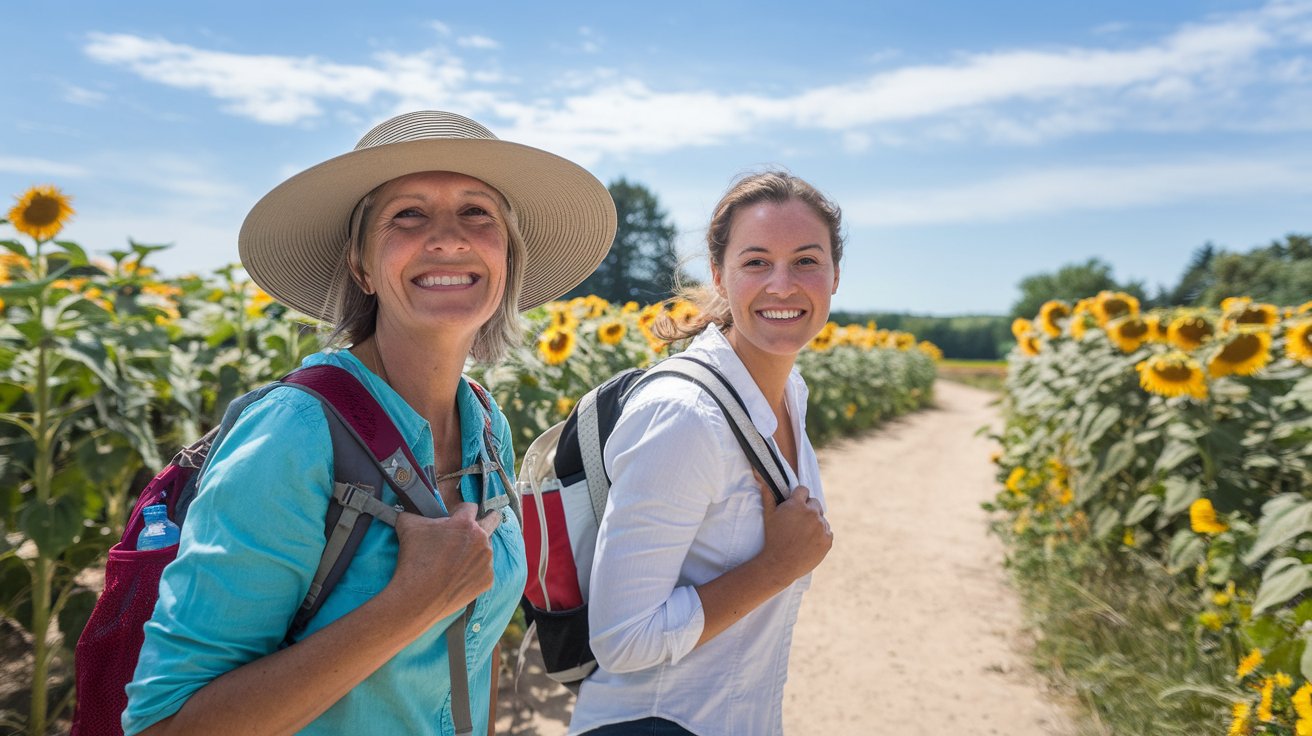The Controversial Truth About Making Your Journey Matter
Purpose-driven travel isn’t about collecting passport stamps or posting sunset photos on Instagram. It’s about showing up as your authentic self, contributing meaningfully to the places you visit, and returning home fundamentally changed – not just sunburned and slightly poorer. It’s travel that serves something bigger than your own wanderlust.
But here’s the uncomfortable question: Are you travelling to serve yourself, or are you travelling to serve others?
The Uncomfortable Truth About Modern Travel
We live in an age where travel has become performative. Where “finding yourself” means finding the perfect angle for a selfie at Machu Picchu. Where “authentic experiences” are pre-packaged and sanitised for Western consumption. Where we measure the success of our journeys by likes, not by lives touched.
I’m calling bullshit on it all.
After hosting hundreds of people on transformative journeys along the Camino de Santiago, I’ve witnessed the profound difference between tourists who take and travellers who give. The latter return home with something money can’t buy: a sense of fulfilment so intense it rewrites their entire life story.
Let me tell you about Hettie.
The Woman Who Redefined What Purpose-Driven Travel Means
Hettie Delaur arrived at one of my Trailtracers retreats in the southwest of France looking like she’d stepped out of an outdoor gear catalogue – every piece of equipment perfectly coordinated, brand new, and probably worth more than most people’s monthly rent. At 47, she was a successful marketing executive from Sydney who’d just been through what she called “the most civilised divorce in human history.”
“I booked this retreat because I figured seven days of walking would be cheaper than therapy,” she announced to our group of four with the kind of corporate confidence that usually makes me want to hide behind a tree. “Plus, I get to tick southwest France off my bucket list.”
I almost groaned. Another bucket-list traveller who’d confused the Camino with a hiking vacation.
I was spectacularly wrong.
On day two, as we walked through the rolling hills of Gascony, Hettie noticed something the rest of us had missed: Miguel, another guest, was limping. Not dramatically – just enough to suggest old pain he’d learned to live with. While the rest of us were absorbed in our own inner journeys, Hettie quietly fell into step beside him.
“You know,” she said in her practical way, “I’ve got some experience with sports injuries. Mind if I take a look?”
Miguel, proud and private, initially resisted. But there was something about Hettie’s directness – no performative concern, no Instagram-worthy moment of helping the others – just genuine human noticing.
It turned out Miguel had been walking on a badly sprained ankle for three days, too proud to cancel his retreat. Hettie spent her lunch break fashioning a proper support bandage from her expensive first-aid kit, sharing techniques she’d learned from years of weekend rugby (a detail that delighted Miguel, who’d never met an Australian woman who knew the sport).
But that was just the beginning.
By day three, Hettie had transformed from corporate tourist to group catalyst. She’d discovered that Maria, another walker, was struggling with the death of her husband six months earlier. Instead of offering platitudes, Hettie shared her own story – not the sanitised version about “conscious uncoupling” she’d given us initially, but the raw truth about losing herself in a twenty-year marriage and the terrifying freedom of starting over.
“I thought I booked this trip to find myself,” she told Maria as they walked together through a eucalyptus forest, “but maybe I’m here to help you find you instead.”
She organised impromptu group dinners at local restaurants, insisting we eat where the locals ate, not where the guidebooks recommended. She learned enough Spanish in three days to have genuine conversations with shopkeepers about their lives, not just their products. She carried the backpack of James, our 62-year-old retired teacher, when his arthritis flared up – not because she was asked, but because she noticed.
On day five, in the small village of Nogaro, Hettie discovered that the local pilgrim hostel was struggling financially. The owners, an elderly couple who’d been welcoming walkers for over a decade, were facing closure due to post-pandemic debt. While the rest of us were planning our afternoon rest, Hettie was in the village, using her marketing expertise to help them create a simple website and social media presence.
“I’ve spent twenty years helping corporations sell things people don’t need,” she told me that evening. “Maybe it’s time I help people share things the world desperately needs – like kindness, and sanctuary, and the belief that strangers can become family.”
But it was her final act that made Hettie unforgettable.
On our last day, as we approached Aire-sur-Adour, she quietly disappeared from the group. We found her an hour later at a small roadside memorial – one of many that dot the Camino, marking places where pilgrims had died on their journey. She was kneeling in the dirt, placing flowers she’d picked from the roadside, speaking softly inFrench to a photo of a young man who’d died there the previous year.
“His name was Carlos,” she explained when we joined her. “Miguel told me about him yesterday. He was walking to Santiago to raise money for his daughter’s cancer treatment. He had a heart attack right here, alone, three kilometers from the city.”
She’d spent her morning at the cathedral, not celebrating her own completion of the journey, but lighting candles for Carlos and his daughter. She’d also quietly arranged for a portion of our group’s final dinner cost to be donated to the family.
“I came here thinking this was about my journey,” she said, tears mixing with the dust on her cheeks. “But Carlos taught me that every journey is about all of us. We’re all walking each other home.”
When I received a message from Hettie six months later, she’d left her corporate job and started a nonprofit connecting Australian travellers with small French communities in need of support. Her divorce settlement, instead of funding a year of “finding herself” travel, had become seed money for what she called “The Walking Bridge Project.”
“I finally understand what purpose-driven travel means,” she wrote. “It’s not about the places you go. It’s about the person you become by showing up fully for the people you meet along the way.”
Hettie didn’t just walk the Camino. She let the Camino walk her – right into the life she was meant to live.
Five Key Takeaways about Purpose-Driven Travel
1. Notice Before You Post
The most profound travel experiences happen when we put down our phones and pick up our awareness. Hettie’s transformation began the moment she noticed Miguel’s limp – something invisible to the rest of us who were too busy documenting our own experience. Purpose-driven travel requires us to become students of human nature, not just tourist attractions.
2. Serve Off Instagram
Real contribution happens without cameras rolling. Hettie didn’t announce her good deeds or create content around her kindness. She simply saw needs and met them. The moment your service becomes about your story rather than someone else’s relief, you’ve missed the point entirely.
3. Learn the Language of Connection
This isn’t about becoming fluent in Spanish or French – it’s about becoming fluent in humanity. Hettie’s few French phrases opened doors because they were chosen with genuine interest, not performative authenticity. Learning to say “How can I help?” in any language changes everything.
4. Carry Others’ Burdens, Not Just Your Own
Purpose-driven travel means travelling light on possessions and heavy on compassion. When Hettie carried James’s backpack, she wasn’t just helping with physical weight – she was demonstrating that we’re all carrying invisible loads that become lighter when shared.
5. Let the Journey Change Your Direction
The most meaningful travels don’t just give you stories – they give you a new story. Hettie returned home with more than memories; she returned with a mission. Purpose-driven travel should disrupt your plans, not just your routine.
The Purpose-Driven Travel Journaling Prompt
Take out your journal and write about a time when you were travelling (even if it was just to the grocery store) and you noticed someone who needed help, kindness, or simply acknowledgement. Write about what you noticed, what you did or didn’t do, and how that moment felt.
Now, rewrite that scene as it would have unfolded if you had been travelling with the mindset of service rather than self-focus. What would you have done differently? What might have been possible?
Finally, write a letter to your future travelling self. What kind of traveller do you want to become? What would it look like to plan your next journey around contribution rather than consumption?
“We make a living by what we get, but we make a life by what we give.” – Winston Churchill
Additional Exercises for Purpose-Driven Travellers
The Service Inventory: Before your next trip, research three ways you could contribute to your destination. Could you bring school supplies to donate? Offer your professional skills to a local nonprofit? Simply commit to spending money at locally-owned businesses?
The Gratitude Practice: Each evening of your travels, write down three things you’re grateful for and three ways you contributed to someone else’s day. The second list should be longer than the first.
The Connection Challenge: Set a goal to have one meaningful conversation with a local person each day – not about directions or recommendations, but about their life, their dreams, their challenges. Listen more than you speak.
Finding Your Own Purpose-Driven Path
If Hettie’s story resonates with you, you might be ready to discover how purpose-driven travel can become a gateway to purpose-driven living. Perhaps you’re someone who’s been travelling the world but feeling increasingly empty after each trip. Maybe you’re tired of collecting experiences that don’t seem to add up to anything meaningful.
This is exactly why I created the Purpose Pursuit Protocol – for people who know they want their lives to matter but haven’t yet discovered their unique contribution to the world. Through a series of guided exercises, deep reflection, and practical action steps, you’ll uncover not just what you’re passionate about, but what the world needs from you specifically.
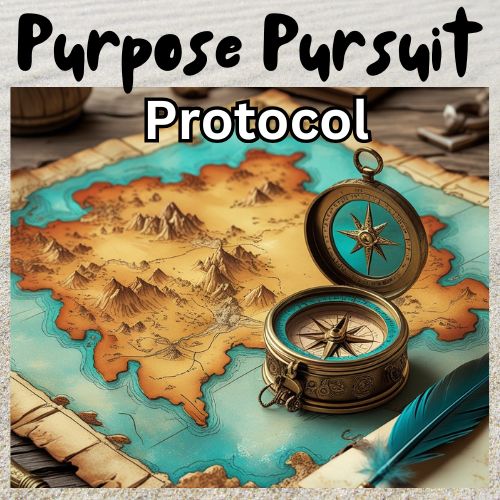
The Purpose Pursuit Protocol – if you want to discover your life purpose, this course will provide you with the clarity, motivation and direction you need to manifest your next chapter – in both your personal and professional life. Get immediate access
Or perhaps you’re like Hettie was – someone who thought they knew their purpose but realized their current path isn’t serving their deepest values. The Purpose Pivot Protocol is designed for people who need to recalibrate their life direction without starting from scratch. It’s for those ready to transform their existing skills and experience into something more meaningful.
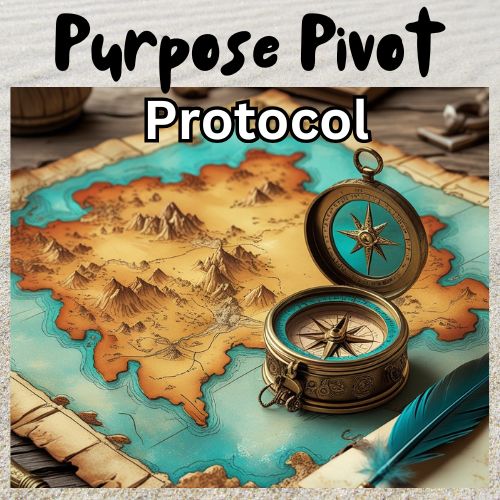
The Purpose Pivot Protocol – drawing inspiration from the Camino de Santiago, this transformative course guides you through a proven framework to recalibrate your authentic purpose and create a meaningful and fulfilling next act. Get immediate access
Both protocols incorporate the principles of purpose-driven travel – the practice of showing up fully, contributing meaningfully, and allowing yourself to be changed by the journey. Whether you’re walking the Camino or walking to your local coffee shop, the opportunity to live with purpose is always available.
Frequently Asked Questions
Q: Isn’t this just privileged people making themselves feel better about their travel? A: That’s exactly the trap we’re trying to avoid. Purpose-driven travel isn’t about feeling better about yourself – it’s about making things actually better for others. If your service is primarily about your own transformation, you’re still travelling for yourself. The question is: would your contribution matter even if no one knew you made it?
Q: What if I don’t have special skills to offer? A: Hettie’s most powerful contribution wasn’t her marketing expertise – it was her willingness to notice and care. The ability to see people, to listen deeply, and to show up consistently are skills everyone possesses. Sometimes the most profound contribution is simply being present.
Q: How do I avoid the “white saviour” complex? A: Lead with curiosity, not solutions. Ask questions like “What do you need?” rather than assuming you know what’s best. Spend more time learning than teaching. And remember: you’re not there to fix anyone or anything. You’re there to contribute to something bigger than yourself.
Q: Isn’t it presumptuous to think I can make a difference in just a few days? A: You’re not trying to solve systemic problems in a week. You’re trying to show up as your best self and contribute what you can in the time you have. Miguel’s ankle was healed in an afternoon. Carlos’s family received unexpected support. Sometimes the smallest gestures create the biggest ripples.
Q: How do I know if I’m travelling with purpose or just telling myself I am? A: Ask yourself: Are you more interested in the story you’ll tell about this trip, or the difference you’ll make during it? Are you planning your travel around your own comfort and interests, or around how you can serve? The honest answer will reveal your true motivation.
Your Inner Camino
Here’s what I’ve learned after years of leading people on transformative journeys: the most meaningful travel experiences aren’t the ones where you find yourself – they’re the ones where you lose yourself in service to something greater.
Hettie didn’t set out to change her life. She set out to tick southwest France off her bucket list. But she returned home with something far more valuable than a completed itinerary: she returned with a clear sense of who she was meant to be and what she was meant to do.
The Camino didn’t give her purpose – it revealed the purpose that was always there, waiting to be lived.
This is the controversial truth about purpose-driven travel: it’s not actually about travel at all. It’s about becoming the kind of person who shows up fully wherever you are, who notices what needs attention, who contributes without keeping score.
Whether you’re walking 500 miles across Spain or walking five minutes to your neighbour’s house, the opportunity to travel with purpose is always available. The only question is: are you ready to let the journey change you?
Because in the end, we don’t just take trips – they take us. The question is: where are you letting them lead you?
Ready to discover where your own purpose-driven journey might lead? The path starts with a single step – and the courage to take it not just for yourself, but for everyone you haven’t met yet.
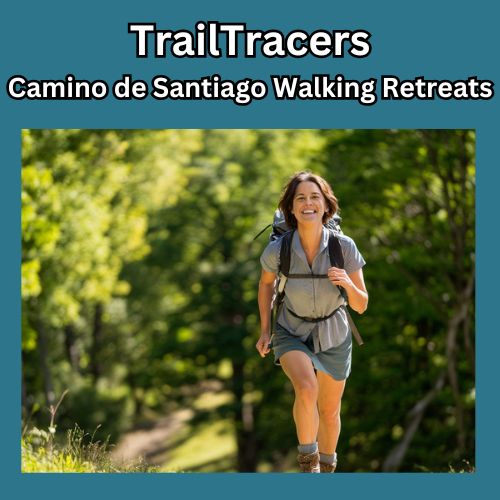
If your soul is craving fresh air, meaningful movement, and a chance to reconnect with nature, join us on a Camino de Santiago Crossroads Retreat in the southwest of France. This isn’t just a scenic hike – it’s a powerful, natural reboot for your body, mind, and spirit. Imagine quiet paths, rolling hills, cozy evenings, and slow conversations. No fitness requirements. No forced bonding. No pressure to have a breakthrough. Just one foot in front of the other, and a journey that meets you exactly where you are.
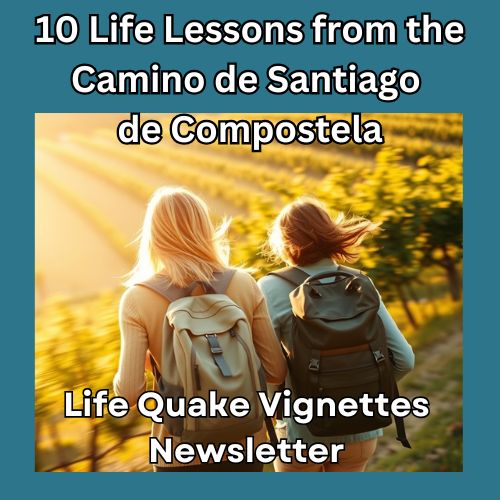
10 Powerful Life Lessons Learned While Walking the Camino de Santiago – a free guide filled with 10 not just “quaint anecdotes” or Instagram-worthy moments (though there are plenty of those) but real transformations from real people who walked the same insight-giving trail you might want to walk one day – Subscribe to my monthly newsletter to Download the Guide

